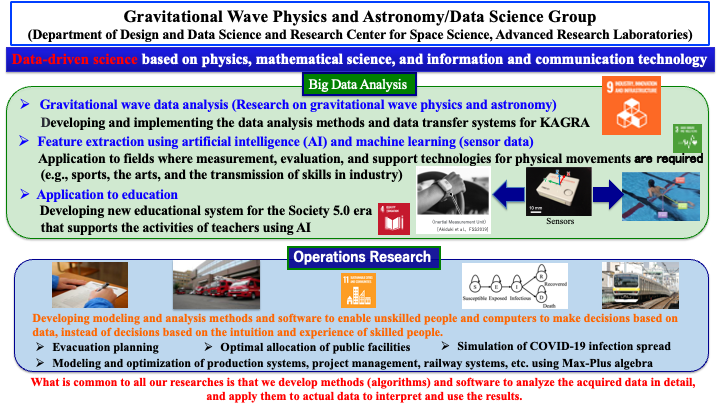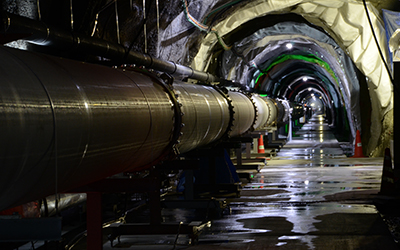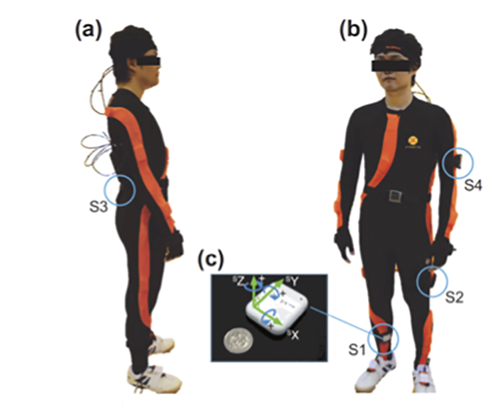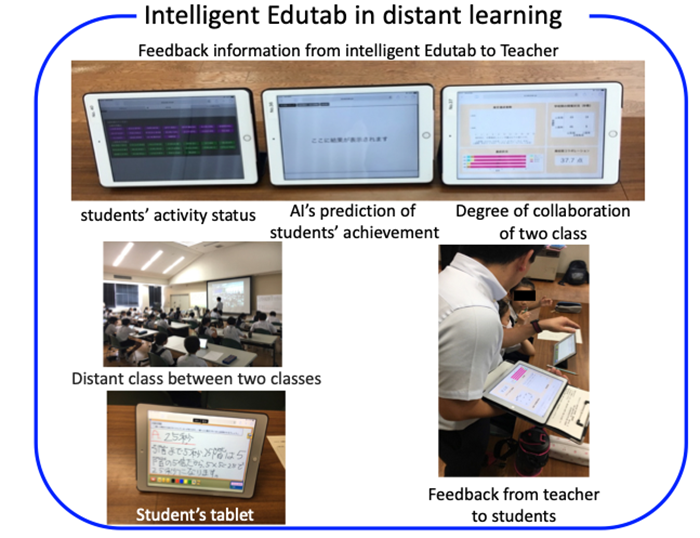Research
In the Gravitational Wave Physics and Astronomy/Data Science Group (GW-DS Group), our research is focused on data-driven science based on physics, mathematical science, and information and communication technologies.
We aim to disseminate the outcomes of our research extensively via various channels such as the Web, lectures, and science cafés. Moreover, we are strengthening our ties with high schools and technical colleges. Through collaborative classes, lectures, and demonstrations, we meticulously show the results of our education and research to junior and senior high school students, contributing to science, mathematics, and information education. Additionally, we actively engage in training sessions for in-service teachers at elementary, junior high, and high schools, collaborating with them to develop teaching materials.
In the future, we aspire to actively engage in discussions about our research findings on the universe in easily understandable formats through public lectures, including science cafés and lectures for junior and senior high school students. Please feel free to contact us.
Figure 1 is a summary of the main research activities within the Gravitational Wave Physics and Astronomy/Data Science Group (GW-DS Group).

(Image of sensors and driver sourced from [Akiduki et al., FSS2019])
There are two major research themes: “big data analysis” and “operations research”. What is common to all our studies is that we develop methods (algorithms) and software to analyze the acquired data in detail and apply them to actual data to interpret and use the results.
Big Data Analysis
Big data analysis is divided into three subthemes: gravitational wave data analysis (astrophysics), feature extraction using AI and machine learning (sensor data), and educational applications.
1. Research on gravitational wave data analysis (research on gravitational wave physics and astronomy)
Keywords: time series data analysis, Linux, programming, machine learning, statistical processing, hardware
We are developing and implementing the data analysis methods and data transfer systems for KAGRA, a large cryogenic gravitational wave telescope located in Kamioka, Hida City, Gifu Prefecture, Japan, as part of an academic exchange agreement with the Institute for Cosmic Ray Research, at the University of Tokyo, which is the main institution of KAGRA.

In simple terms, gravitational waves are ripples in space-time caused by energetic processes in the universe, such as the movement of mass. An interesting aspect is that they can be used to observe systems that cannot be detected by methods. These ripples were predicted by Albert Einstein almost a century ago; however, it was not until 2016 that scientists first announced the detection of gravitational waves. Although gravitational wave physics and astronomy have just begun to use direct observations, many scientific results have been obtained. For example, the gravitational waves observed by LIGO in the United States on September 14, 2015, originated from the merger of a binary black hole (BH). In addition to being the first observation of gravitational waves, the discovery of a BH 30 times the mass of the Sun, the discovery of a binary BH, and an experimental test of general relativity led to several other results. Physics and astronomy using gravitational waves have just begun. However, to obtain further scientific results, it is essential to develop methods to extract gravitational wave information from time-series data that contain large amounts of noise.
We recently applied the Hilbert-Huang transform (HHT), which is an adaptive time-frequency analysis method used in various fields including material damage detection, nondestructive testing, and biological monitoring, to analyze gravitational wave data. HHT analysis is known to have a higher time-frequency resolution than the short-time Fourier and wavelet transforms, and applying it to gravitational wave data analysis allows to extract weak gravitational wave information from noisy data, which is not possible with conventional analysis methods.
The research progress in information science, particularly in the fields of AI, machine learning, and deep learning, has been remarkable. We intend to apply machine learning (including deep learning) to gravitational wave data analysis and study the design of new data analysis processes, code development, and statistical processing methods. We believe that applying knowledge from other fields to gravitational wave data analysis is critical and the “key” to achieving multi-messenger astronomy and astrophysics. Until gravitational wave physics and astronomy are fully developed, it is anticipated that there will be a continued process of trial and error. However, we believe that it is critical to continue developing the original data analysis methods from a new perspective.
A Kamioka laser strain meter, designed to precisely measure movements within the Earth’s interior, has been installed at the same site as KAGRA. We are currently developing data analysis methods in collaboration with the Earthquake Research Institute at the University of Tokyo.
The data analysis method, which is at the core of our research, involves extracting extremely faint gravitational wave signals from noisy observational data. This is not only a matter of academic interest in physics and astronomy but also a fundamental challenge in gravitational wave observation.
Furthermore, HHT analysis and machine learning are being studied and utilized in a variety of fieldsincluding voice, image, and biological signals processing, such as electrocardiograms, electromyograms, and electroencephalograms. Therefore, we believe that the findings from HHT analysis and machine learning can have an impact on a wide range of fields beyond gravitational wave data analysis.
2. Feature extraction using AI and machine learning (sensor data)
Keywords: human motion analysis, walking motion analysis, safety driving support, sports science (e.g., athlete support systems), medicine (e.g., early detection of sleep apnea syndrome), time series data analysis, machine learning, statistical processing, programming
With the miniaturization of sensor devices, it has become easier to use sensors (e.g., accelerometers) to measure and collect body movements during daily activities and work. In particular, the development of technology to recognize user motion from measured data is progressing, with applications ranging from entertainment in games to equipment operations. However, while recognizing individual actions like standing up or walking has become feasible, the scope of applications remains limited. Quantitatively evaluating the proficiency of an action, such as driving a car, playing sports, or operating machinery, by extracting patterns reflecting individual differences and skill levels from measured data obtained through training poses a challenge. As of now, it is not possible to quantitatively evaluate the “skillfulness” of the movement.
Therefore, our group aims to quantitatively evaluate the individual differences and skills of each operator/worker and is conducting research to extract feature patterns from measurement data of body movements that consider individual differences and proficiency (e.g., research to extract features of walking movements (see Figure 3)). Although this research is still in its early stages, we hope to contribute to the advancement of skill education by developing a low-cost and simple method for understanding individual differences and proficiency in human body movements.

3. Application to education
Keywords: educational technology, educational field, statistical analysis, machine learning, artificial intelligence
We are developing a new educational system for Society 5.0 that uses AI to support teacher activities. We are developing the Edutab system, which collects activities performed by learners on tablet devices and records them as educational data, combined with behavioral and learning records. The aim of this system is to enable the analysis of educational data using AI and other techniques and to use it for teacher reflection. Furthermore, using feature extraction technology, we aimed to provide real-time feedback to the class, support teachers’ teaching, and achieve high-quality teaching outcomes.
Until now, teachers’ skills have often been based on their personal experiences. However, if classes can be quantified and the outcomes stored in a cloud environment, it will be feasible to use the data as evidence for class review, analysis, and scientific teacher training. Additionally,the accumulated big data can facilitate the advancement of educational AI and analysis methods at the local or national level. Under the motto “Collaboration between teachers and AI,” experts in ICT, data science, and education are working together to promote this project.

Operations Research
Keywords: mathematical and logical thinking, programming
In the field of operations research, we are developing modeling and analysis techniques alongside software development. Our goal is to empower both unskilled individuals and computers to make data-driven decisions, moving away from reliance solely on the intuition and expertise of skilled professionals.
Recently, our focus has turned towards simulating the spread of COVID-19. We have been actively sharing our findings and providing data to relevant stakeholders. We are committed to continuing our research efforts, sharing and publishing our results, and providing data to facilitate informed decisions-making processes.
We have been addressing challenges related to the optimal allocation of public facilities and the number of public facilities in the future to maintain convenience. This includes modelling and optimizing production systems, project management, railway systems, and more, using Max-Plus algebra. Additionally, our research extends toevacuation planning, such as disaster evacuation simulations that incorporate the exchange of congestion information at evacuation shelters via social media networks (SNS).
We will continue to use a variety of data to develop our research and collaborate with students, companies, and local governments on real-world research topics.




